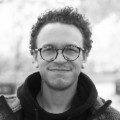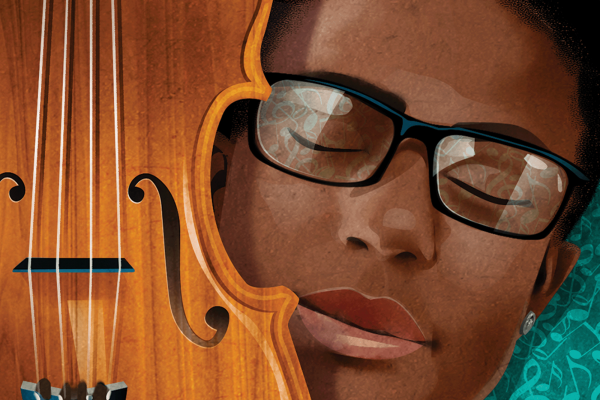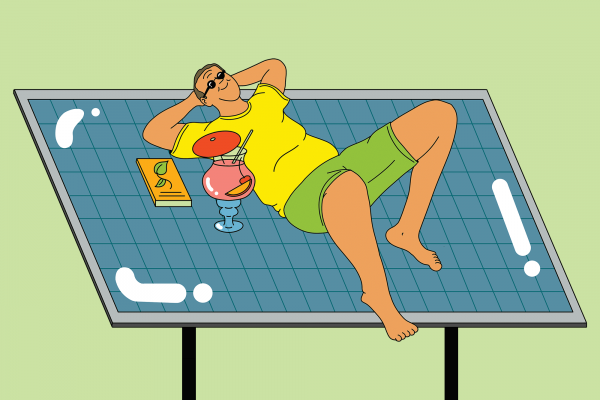Two important promises I’ve made to myself: I will never again watch a video of a person being lynched by the police and I will not allow my writing to be used in a way that makes Black pain a spectacle. Last week, on the same day as the guilty verdict was announced in the Derek Chauvin trial, police shot 16-year-old Ma’Khia Bryant. Her name, along with Daunte Wright, 20, and Adam Toledo, 13, was added to the list of those whose lives have been stolen by the police. There exists footage of their murders. I haven’t seen it. I never will.
In the past, I’ve suffered through the videos of Walter Scott, and Tamir Rice before him, and Eric Garner before him. I, along with other people Elizabeth Alexander refers to as the “Trayvon Generation,” have been plagued with images of death that are often referenced as indisputable proof the U.S. is steeped in whiteness. But like the freedom fighters before us, we did not need to see proof.
Some will argue that the video of George Floyd being lynched was integral to Chauvin’s conviction. But if video footage is meant to keep the police “accountable” and the public “safe,” then why have so few cops been convicted of murder? Why do the benefits of body cameras seem inconclusive? Why did Chauvin demonstrate a certain serenity when snuffing out George Floyd’s life, even though he knew he was being filmed?
Videos of police shootings are not integral to the conviction of police officers, but they do inspire fatigue and milquetoast calls for “reform.” After the release of each video, lawmakers promise, “never again.” Some Democrats watched the video of George Floyd being murdered and vowed to take a knee; others had the audacity to name a law after Floyd that awards more money to police departments, instead of diverting already overinflated police budgets to the community.
The footage of those deaths will haunt me until the day I die. What do I do with that haunting? It’s the question that weighs on me daily as an activist and a writer. For a time, I was convinced their deaths would be avenged by that footage, if only enough people saw it. Then, after each inevitable acquittal or dismissal, I lamented the tragedy and the trauma of being raced as Black in the United States.
I think that is just where they want us. What I mean is: The individuals, institutions, and systems that benefit from this sort of oppression want to lock us in a prison of despair where all we can do is watch videos of, think about, talk about, or write about the acute trauma of being classified as subhuman.
It is easier than ever to become trapped in this prison, as it is currently in vogue to “create space” for Black and brown people to air their grievances, even if there’s ultimately no structural change to abolish the sources of oppression. If we want society to change, then we cannot just study or merely critique oppression; we must embrace paradigms that look to the promise of a world devoid of viral videos depicting death, along with abolishing the institution causing these deaths: the police. But does it have to be as drastic as abolition? Why not reform? Keeanga-Yamahtta Taylor, a professor of African-American studies at Princeton, has argued that calls for “police reform” have not led to any sort of “meaningful” or “substantive” change. Because of this, Taylor, as well as other activists, have started to imagine a world without police.
I always think of jazz whenever I think of a world without police. Artist-activist Harmony Holiday, in her essay “A Brief History of the Policing of Black Music,” convinced me the police would love nothing more than a world without jazz. Because a world without jazz is a world without liberation, a world where Black pain is only fetishized, and never distilled into resistance, which Holiday describes as “the candid militancy” in Black musicians’ spirits.
That candid militancy cannot be distilled from what scholar and activist Zoé Samudzi calls “memed images of anti-Black brutality and violence.” Samudzi argues whether violence is committed by police or those who consider themselves to be police-adjacent, these images and videos of anti-Black violence circulate among us for the dual purposes of reinforcing racial order as well as reinforcing the wages of sin for those who aspire to live outside of whiteness: “alienation or humiliation, physical violence, confinement, death.”
As activists and artists, we must relentlessly refine our demands and our art, allowing injustice to inform our perspectives while resisting internal and external pressures that trap us in discourses that revolve around marginalization. The police state’s power resides in trapping us in a mindset of marginalization that restricts Black liberation and Black artistic expression. This leads us back to jazz. Jazz is not just the sound of a dirge, but it is also the sound of exploration, escape, experimentation, ecstasy, and exodus. And like jazz, we must resist any categorization that would confine us to a blues scale.
That’s not to say we should completely disengage from conversations about marginalization. But those conversations normally miss the contradictory nature of liberation. More specifically, conversations oriented around marginalization miss the nature of liberation in the Black experience, where joy and pain are not experienced separately, but simultaneously, as we work toward justice with fear, trembling, and candid militancy. Once I embraced this paradigm, I was no less haunted by the reality of police lynchings, but I was able to reframe the conversation in terms of freedom being a constant struggle.
In other words, whether we watch the videos or not, the fact that we live in a world where police murder videos have become a genre unto themselves is the overriding impetus inspiring our activism, our art, and our insistence that the police must be abolished. It’s true that George Floyd and many others should absolutely still be here among us. And while that is cause for lament, it should also inspire us to approach justice work like jazz artists — allowing the past to inform where we are going, while also abolishing systems and boundaries in an effort to move in a new direction.
There is a third promise I’ve made to myself: As a Black person, an activist, and an artist, I promise to do my damnedest in imagining a world without police, even when the days are dark and I worry the art of words has left me. Imagining a world without police is what generates art and perspectives that pivot us away from the politics of what is “practical,” toward the politics of what is (im)possible. And once we start dreaming in this direction, we realize we can even dream beyond the negation of oppression, and toward repair.
Got something to say about what you're reading? We value your feedback!







